Second-degree burn
Warning: Contains images of skin deformationI finally burned myself badly enough to observe some interesting development. It happened while I was trying to pour boiling water from the kettle. My hot water bottle¹ was bent on its end and it splashed water over my hand when it unfolded itself.
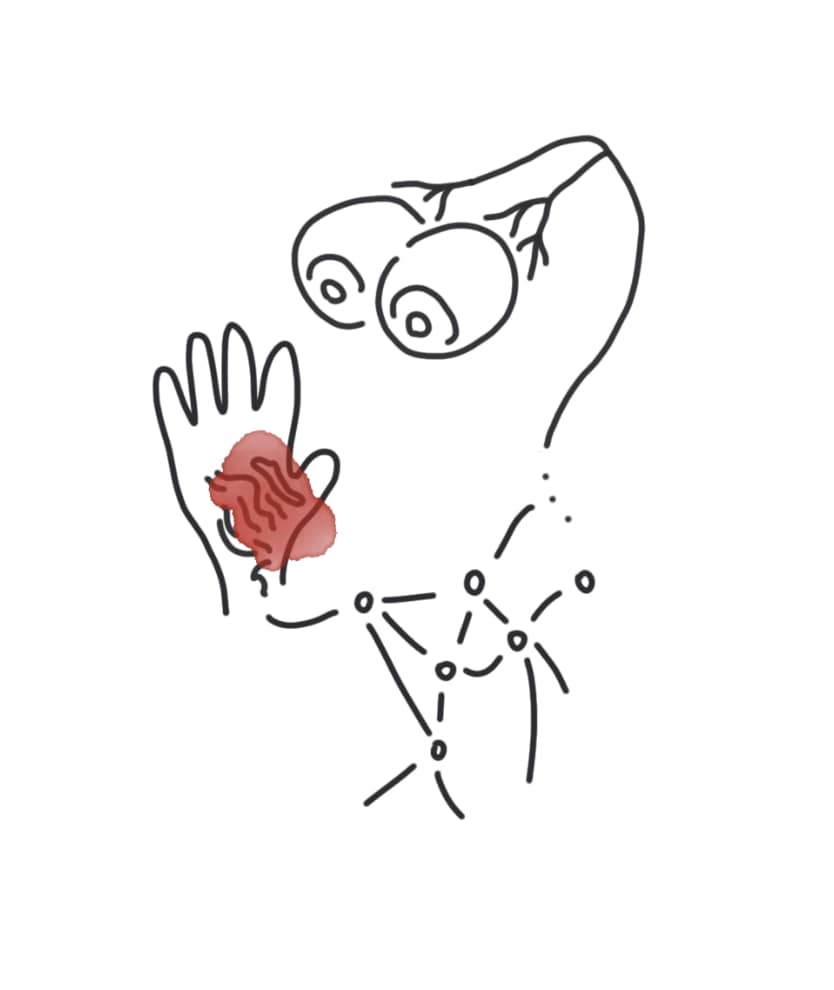
According to this chart, my burn is a second-degree burn. Lucky it was my hand instead of my face, because the skin got really funky over the next few weeks.
Day 1
It started to form a few blisters within a couple of hours, each of them getting larger. It was very painful that I had to take ibuprofen.
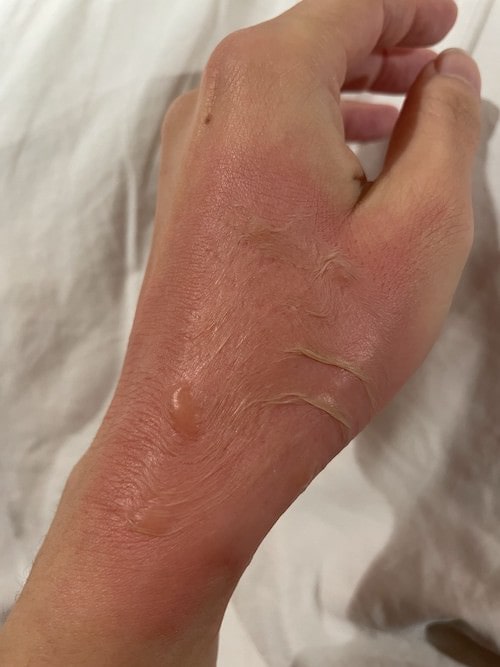
Day 2
I did not feel much pain. Blisters are now connected and bigger, wobbling like a bag full of liquid.
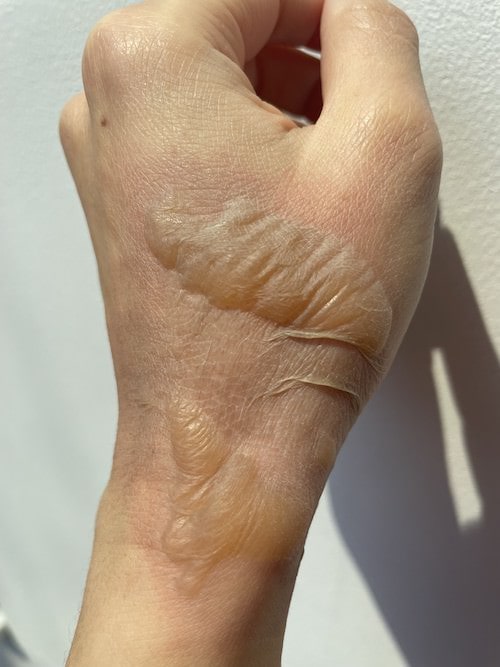
Day 3
At this point I'm rather enjoying this fun sight. No pain at all.
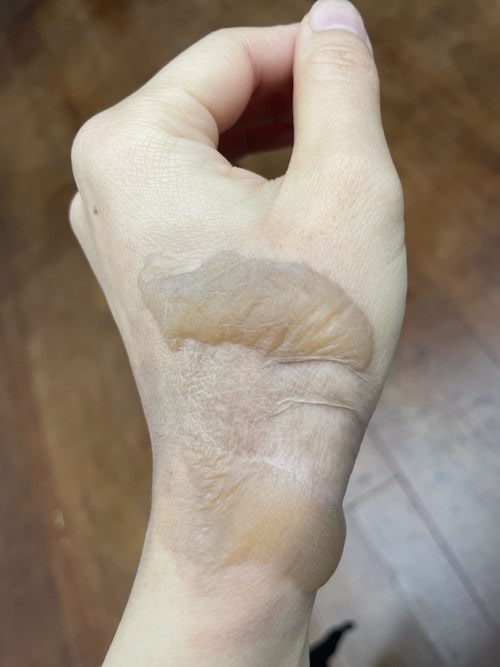
Day 5
Big fat blisters could not hold themselves together, they are all drained.
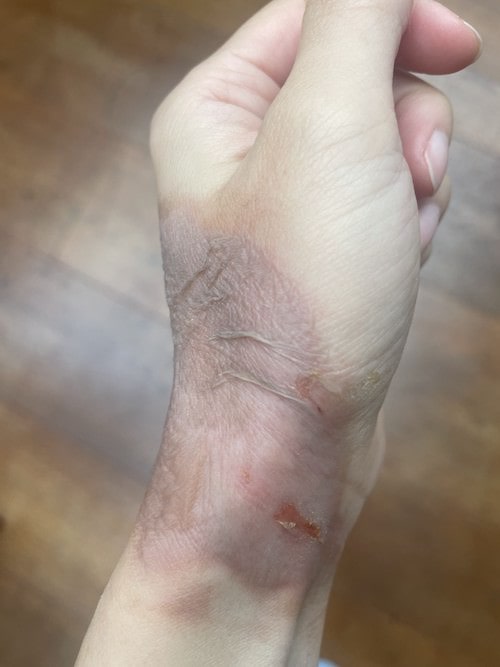
Day 10
I started applying an ointment² for burn, it looks redder because of this.
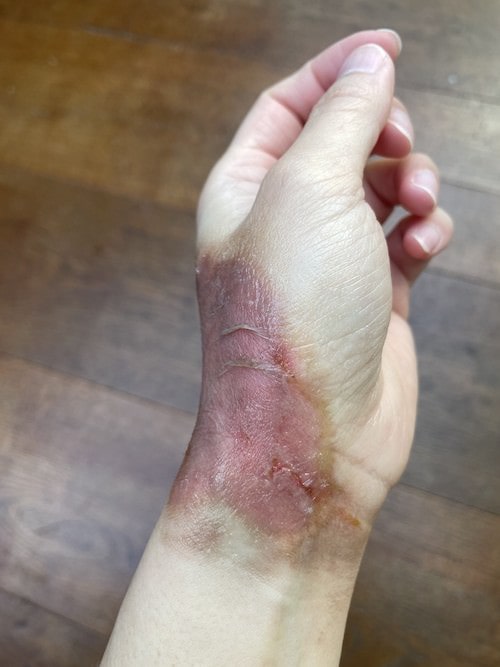
Day 13
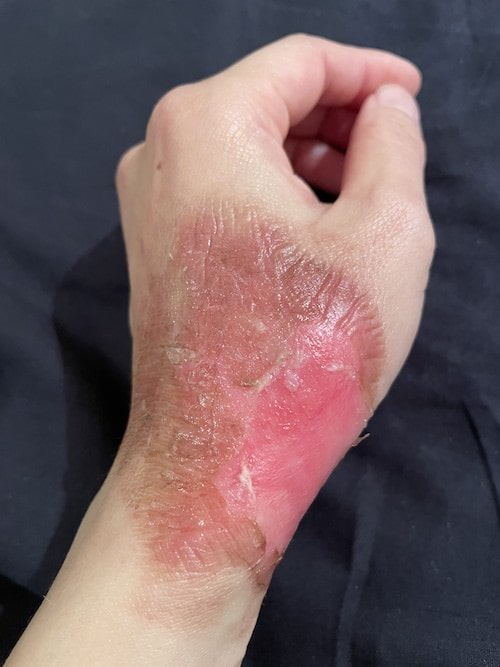
Day 14
The top layer is so crispy and peeling off is going well.
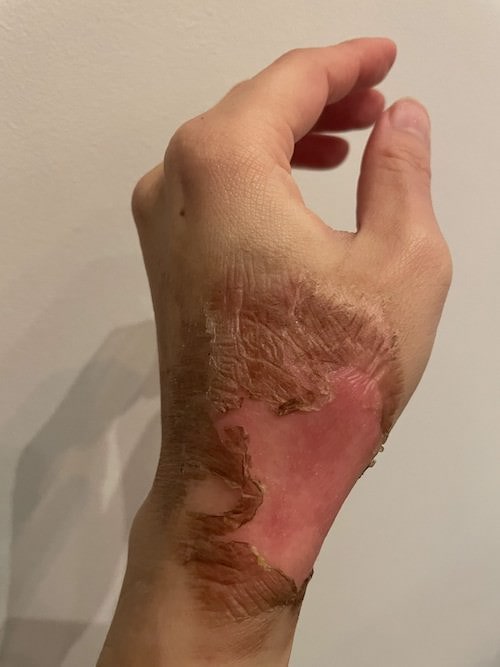
Day 14
My other hand decides to actively peel off the dead skin.
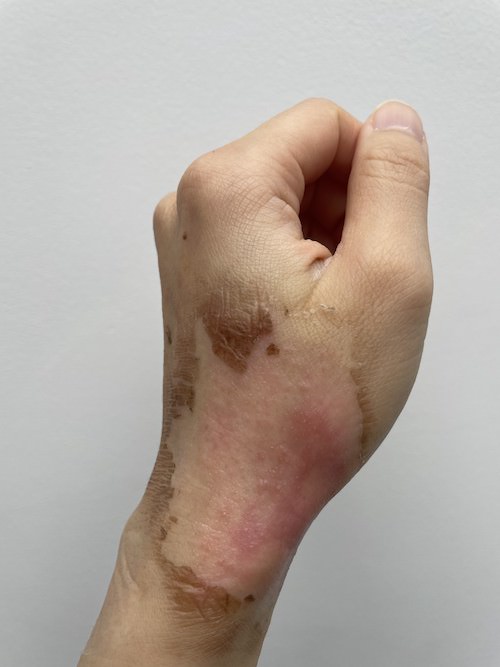
1 Month later
The skin remains a bit pink but all the layers are restored.
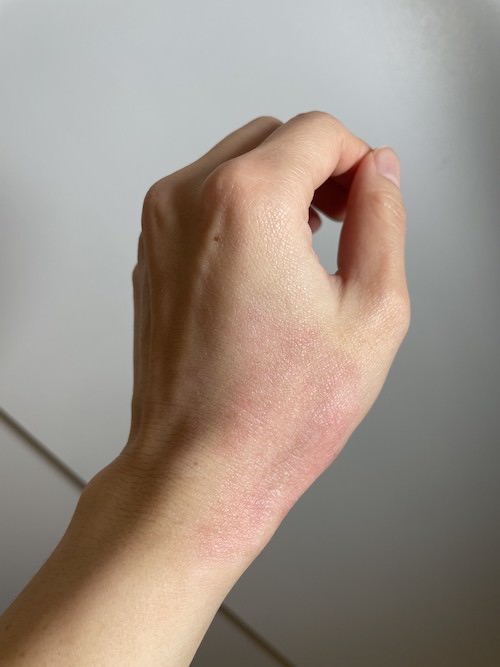
As much as it was surprising and painful, it was a very interesting experience where my brain finally paying due attention to my skin. The way skin repairs itself is such a remarkable process that there should be a whole film about it.
How does ibuprofen³ work on burns?
Ibuprofen is nonsteroidal anti-inflammatory drug (NSAID). Ibuprofen works on one of the chemical pathways for pain. It reduces the ability of your body to make prostaglandins — chemicals that promote pain, inflammation and fever. Prostaglandins is a homrone-like that affect several bodily functions, including inflammation, pain and uterine contraction.
Do potatos work for the burn?
I have a vague memory where my parents put potatoes on my back, after getting sunburned. I think this method is one of the popular home remedies in Korea, and this seems to be an economic way of making a protective layer over a large surface area. I was under the impression that it sort of had active function in curing the wound but it does not sound that way. However, it probably still useful too cool down the affected area for a while.
- I still endorse it.
- elastoplast's wound healing ointment.
- In Korea, the go-to painkiller is tylenol, which contains paracetamol. I don't think I have taken ibuprofen in Korea.